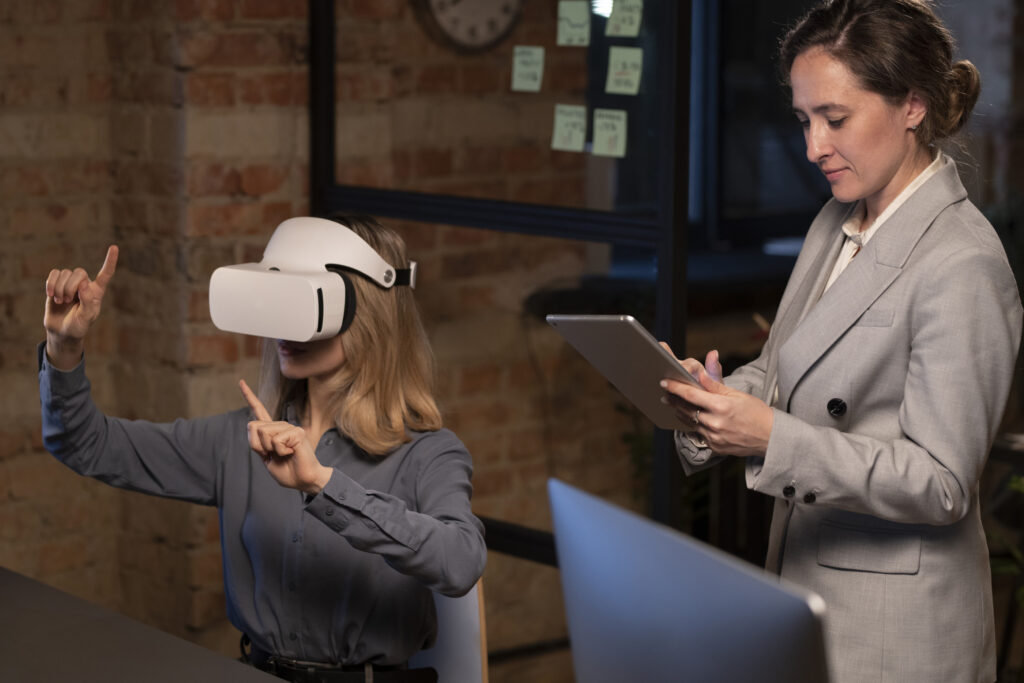
Virtual reality assessments (VRAs): Exploring the reliability and validity of evaluations in VR
Virtual reality (VR) has progressed by leaps and bounds and is now AI-enabled, making it more immersive, effective, and capable of offering lifelike experiences due to higher fidelity. There is an increased application of VR for training in areas such as spatial cognitive skills, psychomotor skills like observational skills, and affective skills like handling stressful situations. Candidate characteristics such as emotional intelligence and risk-averseness, related to job performance, are highly relevant criteria in recruitment and, so far, have been gauged by self-report procedures. Self-report methods are inherently biased and have a high probability of inaccuracy. Organisations have always sought more reliable means of evaluating a candidate’s potential and have keenly followed technological advances.

Unlike the usual question-and-answer format assessments, VR assessments have a gamified and immersive setup. This medium naturally tends to put candidates at ease, reduces test anxiety, and increases their focus. Conventional personality assessments have generally been designed as paper and pencil exercises. Though they are considered reasonably objective and reliable, they are still prone to biases, so an accurate personality depiction might be difficult to obtain. Participants’ responses to situations in a VR environment have been found to be equivalent to the reactions in similar real-world situations. This outcome makes VR assessment highly applicable to measuring personality characteristics like risk-taking and emotional intelligence, as it decreases the probability of socially desired reactions. Candidates can be tested for their decision-making and emotional intelligence capabilities through virtual real-life situations which simulate stressful and confrontational interactions.
Video interviews are highly prevalent in recruitment processes nowadays. VR office environments help recruiters go beyond merely conversing with candidates and allowing them to virtually meet a candidate and assess their functioning in the virtual office. The interviewer can evaluate if the candidate is a fit for the organisational values. With AI-based VR, data captured from candidates can be run through a predictive model to get a picture of future performance. The candidate’s proficiency can be analysed using decision and immersive data.
VR is used in various industries and has led to considerable savings in person hours and materials in the design process and the development of prototypes. In the automotive industry, VR is used extensively for vehicle design, allowing engineers and designers to tinker with the structure and look before building expensive prototypes. When hiring for such roles, VR can prove effective for assessment as it recreates actual on-the-job scenarios and provides candidates with an in-depth experience of what the position entails. VR enables architects to bring the design of a space to life. It allows them to interact with the space to ascertain its functionality fully. VR tools can provide accurate feedback about candidates’ potential in the architecture and space design sectors. Surgical training can be like a real-life experience using VR. VR surgical tools can be extended to evaluating surgical skills, aiding hospitals in choosing the best candidates by assessing abilities to a fine granularity and in stressful scenarios. Other sectors with high-value machinery, like petrochemicals and oil rigs, will find VR the perfect tool to train and assess skills.
VR does have a few disadvantages too. VR solutions have a relatively higher cost and might need occasional technical updates. VR assessments require that all parties have compatible equipment to interact via VR. A remote evaluation will only be possible if the candidates possess the required VR equipment. VR experiences might induce cybersickness, which could be a risk, especially for recruiters undertaking multiple sessions in a day. Bad VR design could cause problems like spatial awareness loss, nausea, dizziness, and disorientation.
Virtual reality assessments have the potential to transform the recruitment process. It is an enriching and enlivening assessment channel. It allows the candidates and the organisation to truly understand whether they can be a mutual fit.
Reference: